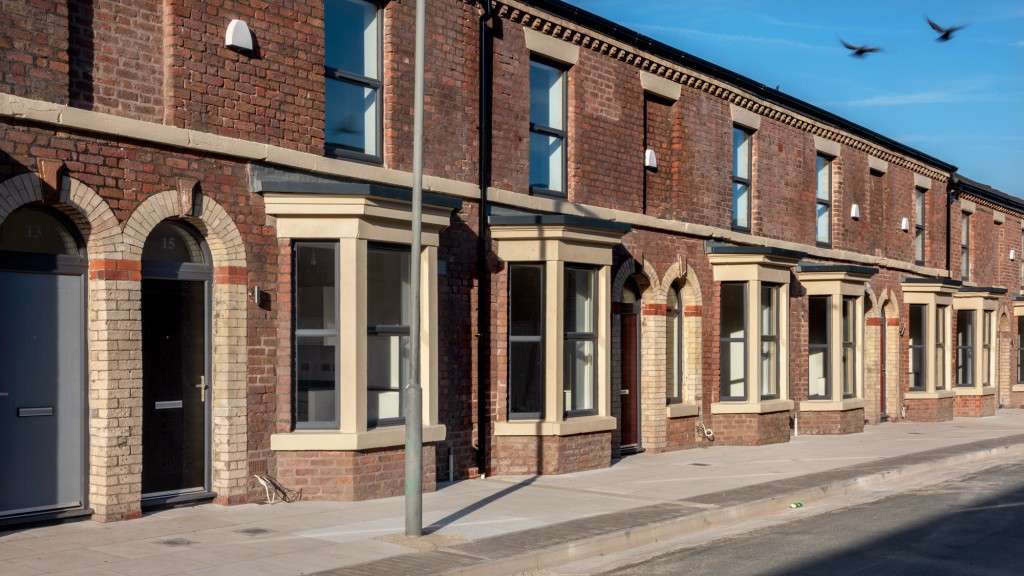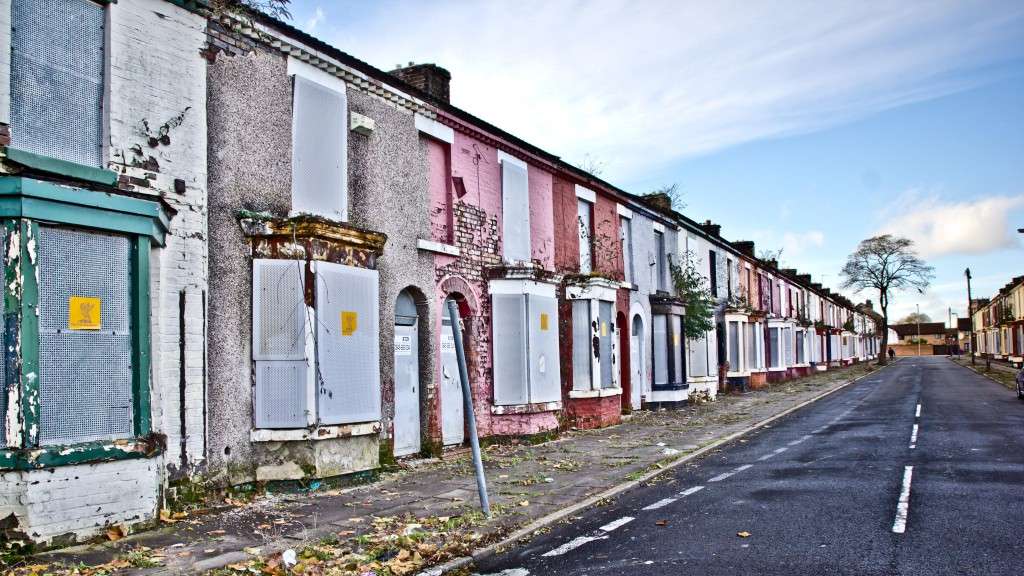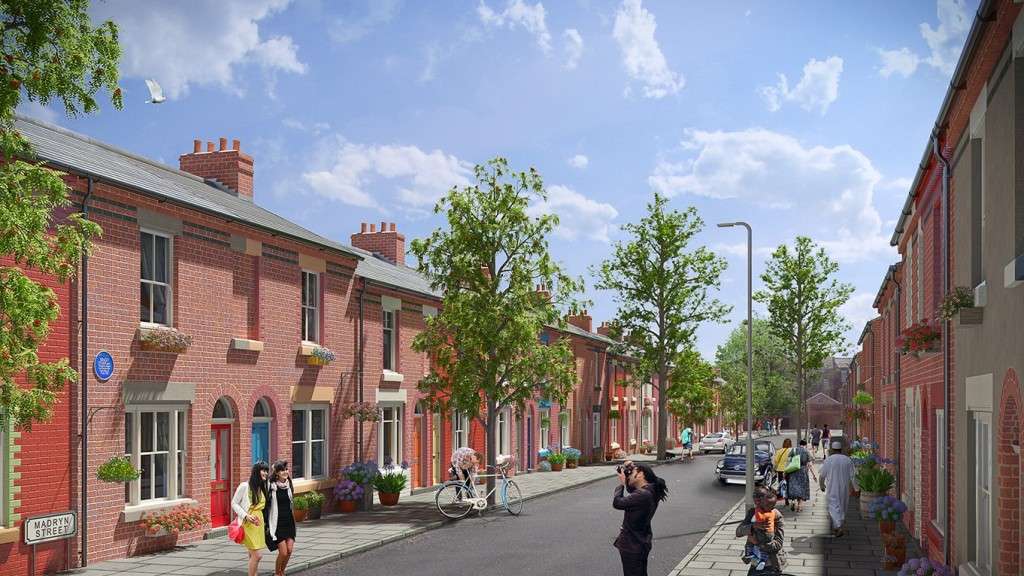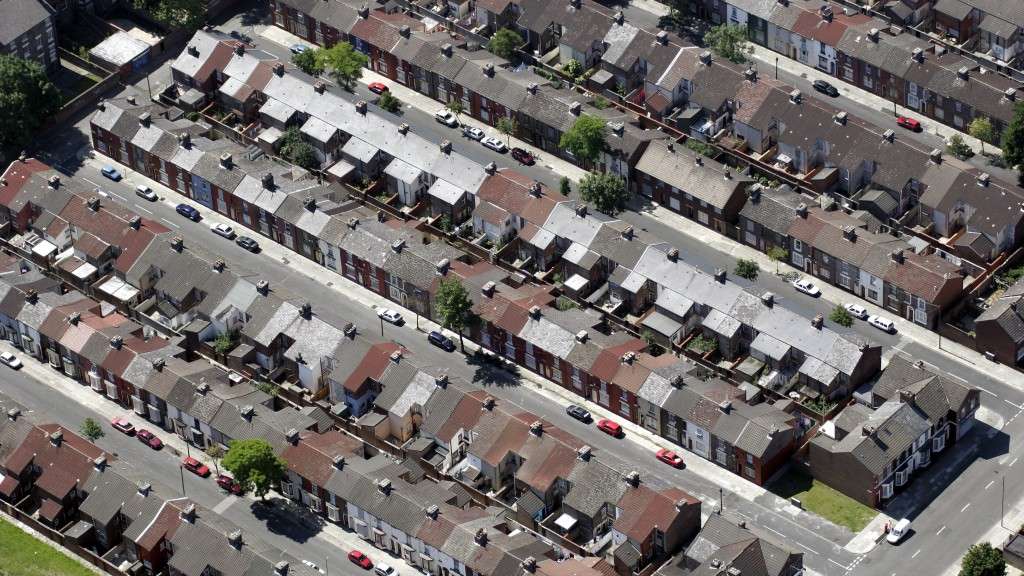Shake it up: How campaigners made Beatles history in Taylor Swift’s Liverpool landmark
In this article marking the 10th anniversary of the Welsh Streets public inquiry, campaigner Jonathan Brown looks back on one of SAVE’s biggest victories
2nd July 2024
When Taylor Swift chose Liverpool’s graceful Cunard Building to film her explosive recent pop video for I Can See You, a source explained she “loved the history” of the landmark shipping office on the famous Mersey waterfront.
Did the American megastar know that exactly 10 years ago today another chapter of popular music history was written here, when a Beatles birthplace was saved from bulldozers by heritage campaigners?
The Welsh Streets public inquiry, which reached its climax at the Cunard Building on 2nd July, 2014, was described as “the planning battle of the century so far” by the Times. It pitched conservation charity SAVE Britain’s Heritage against regeneration officials from Liverpool City Council.
At stake were not just the birthplace of Beatles’ drummer Sir Ringo Starr – No.9 Madryn Street, L8 – but more than 400 similar Victorian terraces slated for demolition in the surrounding Toxteth district – and the fate of central government’s “managed decline” approach to neighbourhood renewal.
The inquiry brought to a head a decade of bitter nationwide protest against John Prescott’s hated £2.2bn “Pathfinder” clearance programme, which condemned almost half a million historic homes across the North of England and the Midlands as “obsolete” and fit only for landfill.
People living in red-lined zones found themselves isolated, surrounded by “tinned-up” homes and subject to derisory offers to get them to sell, a process the government eventually admitted had “effectively increased deprivation in those areas”.
Whole streets of Victorian homes bought with public money were boarded up, blighted and eventually bulldozed, with the land handed to big housebuilders and social landlords, delivering far fewer homes at far higher prices, a result described by critics and MPs as “social cleansing”.
SAVE brought international press attention to the scandal, with major documentaries by Sir Trevor McDonald and architect George Clarke piling pressure on ministers and triggering an investigation by the House of Commons’ Public Accounts Committee.
Perhaps the most audacious move by SAVE was the purchase of the final inhabited property on Madryn Street, a few doors along from where a certain Richard Starkey came into the world on 7th July, 1940, just months before the Blitz. He of course grew up to become Ringo Starr.
SAVE’s legal and campaign work forced the government to hold a three-week public inquiry, at which was revealed new evidence about the importance of Liverpool’s terraced streets, especially the forgotten impact of prolific Welsh architect Richard Owens.
It also gave a voice to people forced from their homes and those keen to return, a perspective overlooked in official narratives.
The eventual upshot was a victory which not only saved many good buildings and a key location in Beatles history, but also changed national urban policy. The case led to the scrapping of sinister “Neighbourhood Renewal Areas” and enshrined resident consent, making demolition a last resort.
“When I heard the result it was out of this world, better than winning the lottery,” recalls retired decorator Stan Allen of Gwydir Street.
“It’s so sad everyone’s gone. They were moved out under false pretences. There’s a new community now and it’s very nice again.”
The inquiry forced a reevaluation of Liverpool’s Victorian terraces, with campaigners for the nearby Granby streets winning the 2015 Turner Prize.
After the public inquiry process blocked demolition in 2015, the streets were transferred to Place First, a specialist landlord developer spun out of public regeneration agency English Partnerships and private consultancy Tribal.
Handed the entire Welsh Streets estate for a reported £1, an asset which had cost over £20m of public money to assemble, Place First have done a magnificent job in radically remodelling and restoring streets the local council and social landlords had run into ruin, with beautiful new properties sitting alongside the characterful old cottages.
Hundreds now live there again, though ownership is far from diverse, with a single private landlord, and just a handful of “affordable” social rented properties available. The fruits of regeneration were certainly denied many of the original residents.
With the Welsh Streets assured their place in pop culture and planning history, they now win awards from the same civic establishment that once ordained their obliteration.
Taylor Swift could write a fine song about behaviour like that.
ENDS
Notes to editors
1. For more information contact Elizabeth Hopkirk – elizabeth.hopkirk@savebritainsheritage.org / 020 7253 3500
2. SAVE has been campaigning since the 2014 public inquiry for the three unlisted Beatles’ birthplaces – John’s, Ringo’s and George’s – to be protected for future generations to enjoy and understand. SAVE argues that the four landmarks should be listed for their “group significance” as tangible reminders of where it all began. In May this year, George Harrison’s birthplace Arnold Grove received a Blue Plaque from English Heritage which was a great step in the right direction, but we won't let the pressure drop. Read more
3. SAVE’s original press release on the public inquiry victory
4. SAVE Britain’s Heritage is an independent voice in conservation that fights for threatened historic buildings and sustainable reuses. We stand apart from other organisations by bringing together architects, engineers, planners and investors to offer viable alternative proposals. Where necessary, and with expert advice, we take legal action to prevent major and needless losses.






![Ringo Starr's birthplace, saved from bulldozers [Credit: Phil Nash]](/img/articles/RINGO_~14.JPG)
![Fans at the Beatles statue outside the Cunard Building [Credit: Jonathan Brown]](/img/articles/Cunard_Bdg_Liverpool_c_JonathanBrown2.JPG)